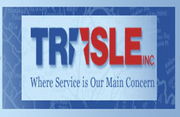How Small Business Owners Can Improve Inventory Tracking
By Tri Isle Inc

Your inventory helps ensure your supply meets the demand, especially if you run a small business that sells products. Keep track of what you have on hand; otherwise, you’ll run out of goods and miss out on sales. If your company has difficulty maintaining a balanced supply, here are a few inventory tracking and warehousing tips that will make your operations more efficient.
3 Inventory Tracking Tips for Small Businesses
1. Ensure Your Team Uses Inventory Tracking
Inventory-tracking creates real-time reports on what’s in stock and what isn’t. Rather than inputting data manually, this method allows your team of supply management specialists to save time by recording items with barcode scans. The program also lets your team keep tabs on your stock at any time from any location.
2. Use Reports
 Have you team use the inventory-tracking software to create reports on you. You can use this information to identify consumer patterns, helping you predict future supply-and-demand needs.
Have you team use the inventory-tracking software to create reports on you. You can use this information to identify consumer patterns, helping you predict future supply-and-demand needs.
This data will also help you identify overstocked goods, and you can adjust future orders so that you don’t buy more than necessary. Take the same approach to determine which products aren’t selling and should be phased out completely.
3. Outsource Warehousing
If you need help managing your inventory, invest in third-party warehouse solutions. These providers operate expansive storage facilities, and they’re equipped to house and accurately track your products. Keeping your supply off-site will also help ensure you aren’t overspending on warehouse space.
If you’re interested in working with a warehousing team, contact the professionals at Tri Isle in Wailuku, HI. This locally owned and operated company has provided Maui businesses with reliable inventory tracking and accurate reporting for over 50 years. They operate a 170,000 square foot storage facility, allowing you to use as much space as you need. To get more information about their services, visit the website or call (808) 244-1800.
About the Business
Have a question? Ask the experts!
Send your question

